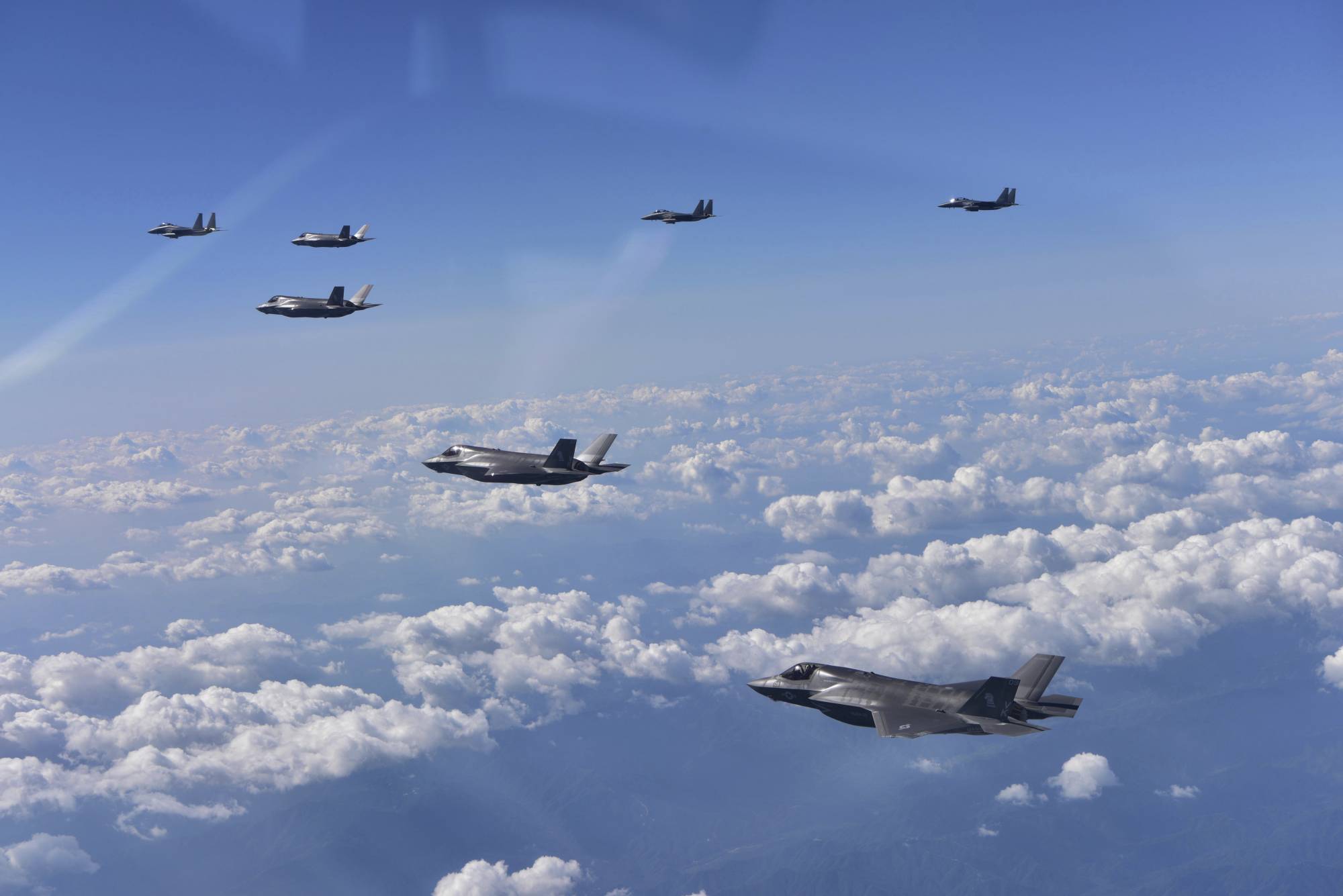
Contractors ponder the murky midterm election results
What does it mean for us? That's what federal contractors are asking themselves in the aftermath of the midterm elections.
Best listening experience is on Chrome, Firefox or Safari. Subscribe to Federal Drive’s daily audio interviews on Apple Podcasts or PodcastOne.
What does it mean for us? That’s what federal contractors are asking themselves in the aftermath of the midterm elections, government will be apparently divided. At least that’s the prediction of the moment. Here with some ideas, the President and CEO of the Professional Services Council, David Berteau talked to the Federal Drive with Tom Temin.
Interview transcript:
Tom Temin: And David, before we even get to the election, there was an immediate issue regarding national security in the form of a GAO report that came out just on Friday as President Biden was winging his way toward his meeting with Xe Jinping of China.
David Berteau: That’s right, Tom. And this GAO report really was remarkable in both its content and its breadth. It basically takes DoD to task on aircraft maintenance for every aircraft DD flies, every fixed wing aircraft DoD flies, that’s Army doesn’t have any except commercial ones, Navy, Marine Corps, Air Force for 10 years now, it seems that almost none of these aircraft have been reaching or exceeding their status of what’s called mission capable rate. That basically means I’m ready to fly and fly if I need to. And this is a decade long problem. So it’s a problem that can’t be attributed to say, one set of decisions or one administration or one general in charge of one area or the other. And it’s ubiquitous, it’s across the board. There’s almost not a single aircraft line that has met its requirements for more than a year or two in a row at anytime in the last decade. This is a damning report. But the real question is, what do you do about it?
Tom Temin: Right? I mean, in many ways, the fleet that the Air Force has is like 1960s and ’70s era British sports cars, they spend more time being tinkered with than actually driving anywhere.
David Berteau: You know, that’s, it’s an interesting point, Tom, I’m reminded of something I wasn’t even thinking about until you brought it up. About a decade ago, I did a piece of work at the Center for Strategic International Studies that looked at the essentially the weapon systems that we had, and I compared them back to where we were at the end of the Cold War. So basically, like a 1989, and a 2009, a 20 years later kind of thing. And what we saw almost across the board, not just aircraft and ships and in ground vehicles, and so on, helicopters, was a force that was the equipment was older than it had been, fewer in number than it had been at the end of the Cold War, and a lot more used. In other words, you know, aircraft, for instance, had a lot more flying hours on them, ships had been at sea a lot longer. So you could see this problem coming a decade ago. Then, of course, we had sequestration that hit that, cut spending a bit. But that’s grown back, you know, every two years since sequestration in 2013, Defense Department has gotten substantial increases, ranging from 4% to as much as 15% per year. So they’ve certainly had the money, or they’ve certainly had more than the money they asked for. The question is, what were they doing with that money, and it appears they weren’t maintaining the aircraft?
Tom Temin: Right. In fact, I think to underscore that, the Air Force recently grounded most of its F-15s in Japan, which is, last I checked, closer to Taiwan than, you know, Lackland Air Force Base is to Taiwan.
David Berteau: If there’s any deterrent value, the closer you are, the more that deterrent value comes up. So here’s the three big questions here. How does this fit with a just released national defense strategy, which talks about integrated deterrence? And obviously, if you’ve got aircraft that can’t fly, and perform their missions, that’s not very much deterrence; in fact, you could argue it’s the opposite of deterrence. You have the second question, which is, alright, here’s where we are, what do we do about it? You know, you can’t blame this on COVID. You can’t blame this on sequestration, you actually have to blame it on a series of decisions, apparently made that says we don’t need to do it today. We can postpone this. And now where’s your surge capacity then to fix this? Because as the Department of Defense said, in its reply to GAO we’ll finish our assessments some as late as 2026, and then figure out what to do about it. That’s not very encouraging. You’ve actually got to take action now. I do think here’s where it looks at where to surge capacity.
Tom Temin: And I wonder what effect that some of the contracting mechanisms in place have to do with this in the first place? In a lot of the platforms. It’s the OEM, that is the only one entitled to do maintenance.
David Berteau: Much of the maintenance here is done at the organic depots, the air logistics centers, the Navy facilities that do aircraft maintenance, etc. And so there’s a lot of the work that’s done by the government. And for some time, now, those depots have been chock full, so they have no surge capacity whatsoever. There may be a spare parts issue. There certainly was during my last tour of DoD back in the mid teens, but there’s also a tremendous amount of surge capacity available in the industry, not just from the OEM primes, but from the services companies that can do this kind of maintenance. DoD needs to look very very quickly and very carefully where that surge capacity is, and to tap the industry’s capability to meet that needs. Because you cannot, in a week when President Biden is meeting with Premier of Jinping of China, you can’t let a report like this go by without an immediate response from DoD. And the only place they can get that surge capacity is from the industry.
Tom Temin: We’re speaking with David Berteau, president and CEO of the Professional Services Council. And let’s get to the election results. Because as we speak, it’s not decided fully but it looks like the House will narrowly be Republican, such that whatever legislative gambits might come from the White House, and the Democratically-controlled Senate would stand a lesser chance of being enacted.
David Berteau: That’s certainly the case. Not a lot of new legislative initiatives. But there’s two things: number one is, that’s next year, you still have this year to deal with, right. So there’s a lame duck session coming up. And you go back to the aviation maintenance problem. what can Congress do about that now? Well, number one is get us out of a continuing resolution, and get us into a full year appropriation. We saw outlays in operation and maintenance in DoD dropped by a third between September and October, right. As soon as you went from a full year appropriation in September to a CR in October, well, that’s not going to get aircraft repaired, it’s not going to get readiness up to speed it’s not going to deter China in any way, shape, or form. So you need Congress to enact that full year appropriations for FY ’23 as quickly as it can. You probably also need to deal with the debt ceiling because as you point out, a Republican Congress, a Democratic Senate, it’s gonna be a little tough to reach a deal on this debt ceiling in a timely way. And you know what that means? That means the chance of a government shutdown, which is not going to help anybody.
Tom Temin: Well, for contractors in the larger sense, though, beyond just aircraft maintenance, and so forth, there is the ability for the government to launch those new programs that require contracting, especially professional services contracting. And so what lame duck does could be super important if just to get things off the dime, even if the appropriation levels aren’t what they might have been in this or that versus the next Congress. At least you’d have the appropriation.
David Berteau: That’s right. And then you also look at the question of nominee., You and I’ve talked about this off and on over the past year, you know, there’s more than 100 Senate confirmed appointees who have cleared committee, so they’ve been deemed qualified by the committee. They’re sitting before the Senate, and we’re going through them one at a time with cloture votes. Some of these are pretty important because without confirmed appointees in place, oftentimes decisions are delayed and postponed, which isn’t to the benefit of either the government or the contractors, they’re going to deliver on those.
Tom Temin: Yes, one big nominee that has a lot to do with information technology and professional services is Danny Werfel for the IRS. Apparently part of what is going to be demanded of him is yet another plan to modernize the IT of the IRS. I think this would be about the sixth or seventh in my memory. They keep having these resets, and now we’re really going to get to it. But nevertheless, they have to try to get to it.
David Berteau: You do have an advantage with Danny Werfel in that he’s been there before. He was the acting commissioner back about eight or nine years ago, he has spent a career in being ready for this position. I don’t know the status of the nomination. Obviously, it’s awful late in the game to get a nominee through this time of the cycle. But you do also have the advantage the White House has with a 50 vote majority in the Senate in the 118th Congress, they will be able to continue pushing nominations forward. It’s really critical, obviously, you know, we would all like IRS to perform better. We all know their IT systems are way out of date. So we know something needs to be done. I think we’re probably at the point where not a lot of plans and studies are needed. We probably need to just execute going forward.
Tom Temin: David Berteau is president and CEO of the Professional Services Council.
Copyright © 2024 Federal News Network. All rights reserved. This website is not intended for users located within the European Economic Area.
Tom Temin is host of the Federal Drive and has been providing insight on federal technology and management issues for more than 30 years.
Follow @tteminWFED





